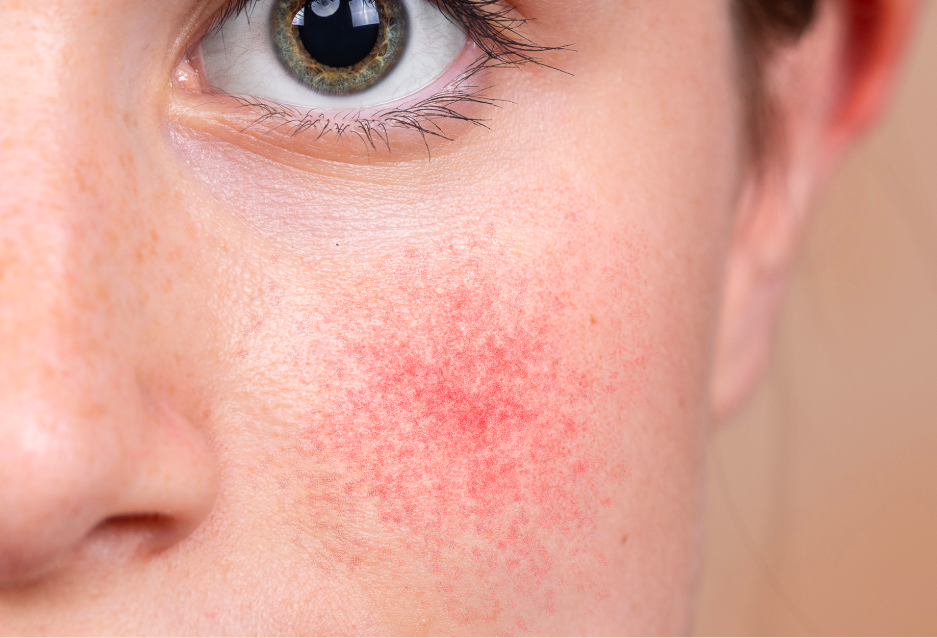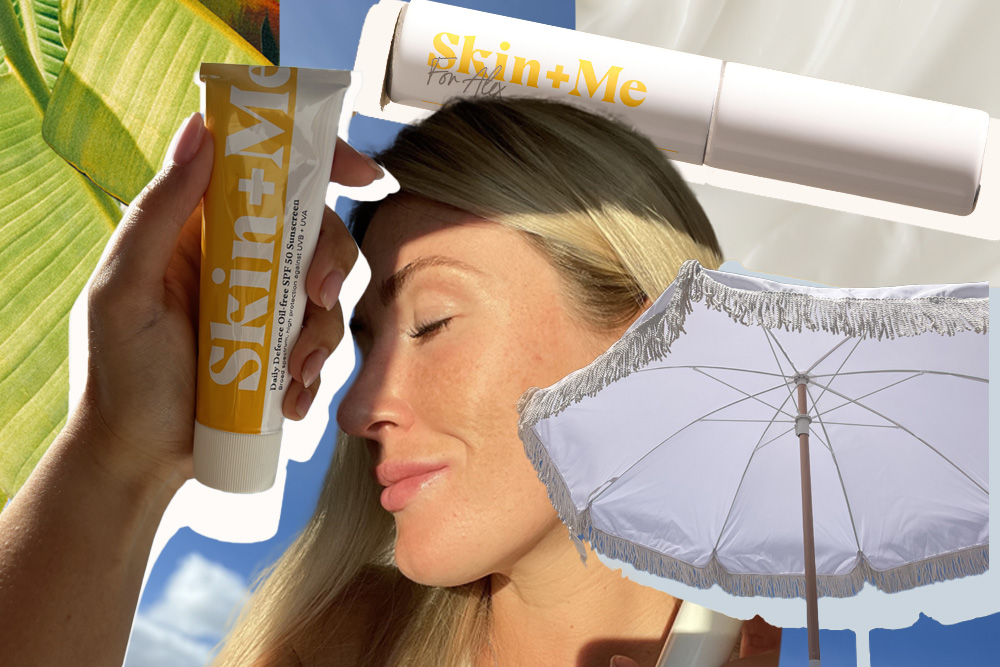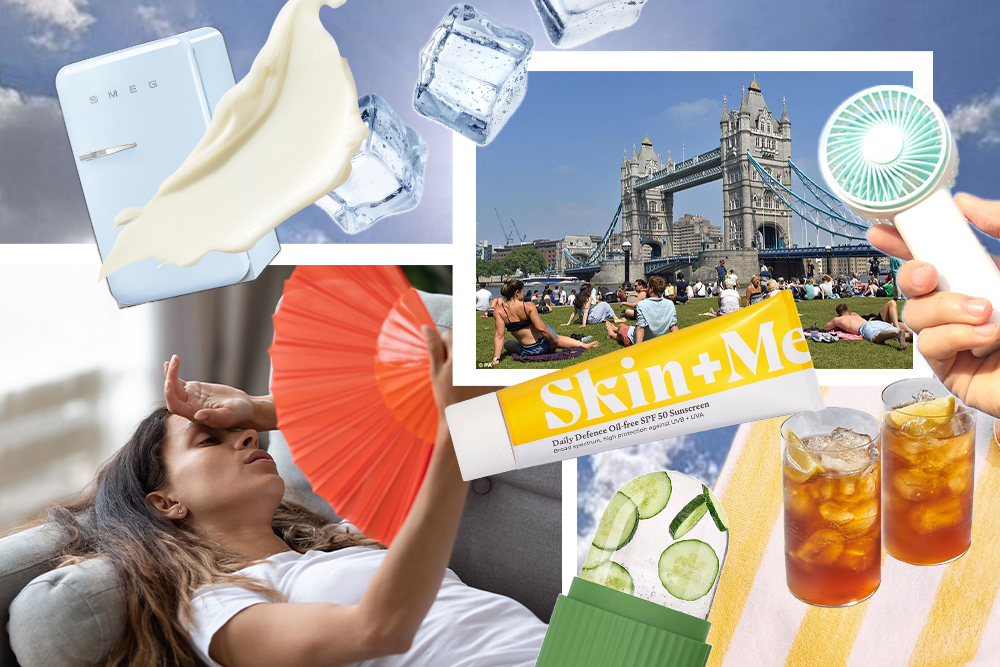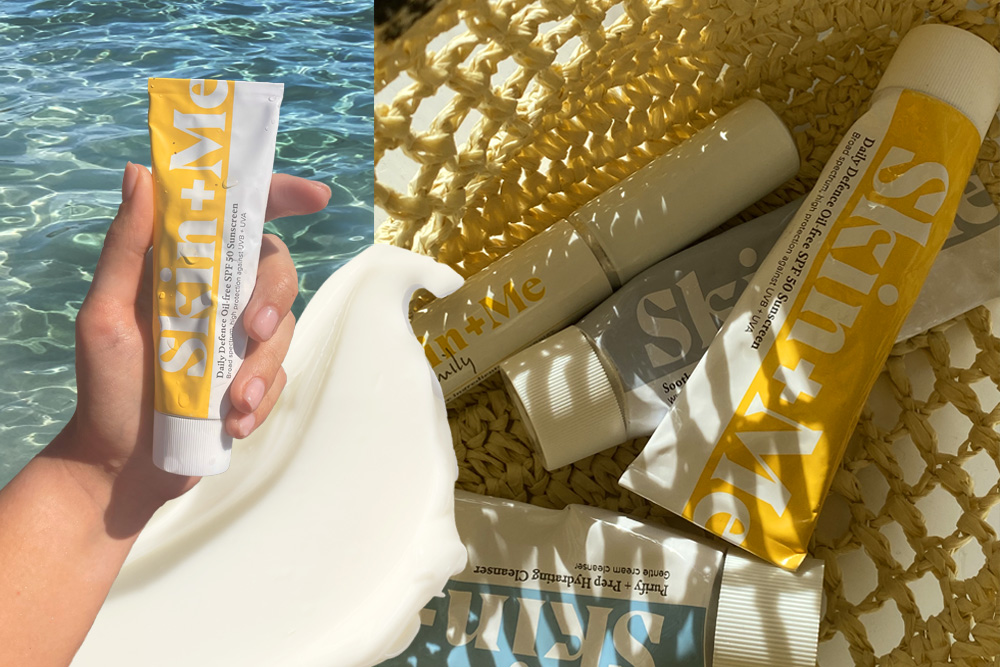Melasma 101

Link to share article here:
Rosacea Awareness Month: Five Things to Know About Rosacea
“I’m not blushing. It’s rosacea.”
“It’s not a rash. It’s rosacea.”
“It’s not acne. It’s rosacea.”
These phrases may well be familiar to people with rosacea, a common yet often misunderstood skin condition affecting around one in 20 people in the UK. As Rosacea Awareness Month draws to a close, we’re talking about symptoms, diagnosis and treatment – here are five things you need to know.
1. There are different types of rosacea
Not everyone with rosacea experiences the same symptoms, as Dr Jason Thomson, Head of Medical, at Skin + Me explains.
“The most common rosacea symptoms include redness, flushing or blushing, small, broken thread veins and spots, particularly over the cheeks, nose and forehead,” Dr Jason says. “Sensitive, dry skin is also common.” These symptoms are usually concentrated around the centre of the face.
However, you might experience other, rarer rosacea symptoms on other areas of the face. “Rosacea can also affect the eyes, causing red, inflamed eyelids and making the eyes feel dry and gritty,” he continues. “Rosacea can also less commonly cause redness and enlargement of the facial skin such as the nose (called rhinophyma) or other parts such as the forehead, cheeks, chin or ears.”
2. Rosacea can be mistaken for acne
Papulopustular rosacea is a specific type of rosacea associated with pus-filled ‘whitehead’ pustules, and red, swollen bumps. They usually appear on the cheeks, chin, and forehead – and might also appear on the scalp, neck or chest.
They’re often misidentified as acne, and can take a long time to go away. A dermatology expert will be able to tell the difference between the two conditions, and you can read more about acne and rosacea here.
3. Rosacea is a chronic condition
Rosacea can’t be cured, but the good news is that the symptoms can be effectively managed – you’ll just need to find the best treatment for you.
Dr Jason Thomson explains, “The treatment of rosacea is very much dependent on the individual’s features and symptoms, and will consist of a combination of lifestyle factors, prescription creams (and tablets in some cases), rosacea-friendly skincare and lasers. The aim of the treatment is to control the symptoms.”
Keeping a diary can help you understand your rosacea triggers – spicy foods, alcohol, vigorous exercise, sun exposure and temperature changes may affect the appearance of your rosacea.
4. An expert can advise you on the right treatment
As rosacea can vary so much from person to person, a dermatology expert can recommend the best treatment plan if you’re finding it difficult to manage on your own.
Treatments for rosacea include:
- Prescription topical creams including metronidazole, azelaic acid and tretinoin, which are used to target mild to moderate cases of rosacea
- Ivermectin, a prescription antiparasitic cream that targets the demodex mite, a microscopic organism which is thought to be linked to rosacea
- Laser treatments, which can reduce the appearance of blood vessels and thickened skin
- Antibiotics, which are sometimes used by medical professionals to treat rarer and more severe cases of rosacea
You might need to try several different treatments or a combination of approaches for the best results.
5. A simple, protective routine can help manage rosacea
If you do one thing, wear sunscreen daily. As Dr Jason says, “UV light is a major trigger of rosacea flares”, so it’s important to protect your skin.
He continues: “As rosacea can often lead to dry, sensitive skin, using appropriate skincare that helps inflammation, protects the skin barrier and does not clog pores, thus worsening rosacea breakouts, is key.”
Choose gentle hydrating cleansers and avoid oil-based cleansers that can worsen rosacea breakouts, or cleansers containing AHAs or BHAs which can be irritant to rosacea-prone skin.
Moisturise daily with a light, oil-free moisturiser – go for products that are anti-inflammatory but avoid thick, rich moisturisers aimed at eczema-prone skin. Avoid skincare with long product lists and fragranced products or products with a high alcohol content to avoid further irritation – keep your skincare routine simple for the best results.
New to Skin + Me? Get your first month of personalised skincare for £4.99 with promo code DOSE – complete our quick consultation here.
Looking for a routine refresh? Add the Dream Routine to your Skin + Me subscription.
In need of a restock? Head to The Skincare Shop for one-off purchases of your Routine Essentials.



